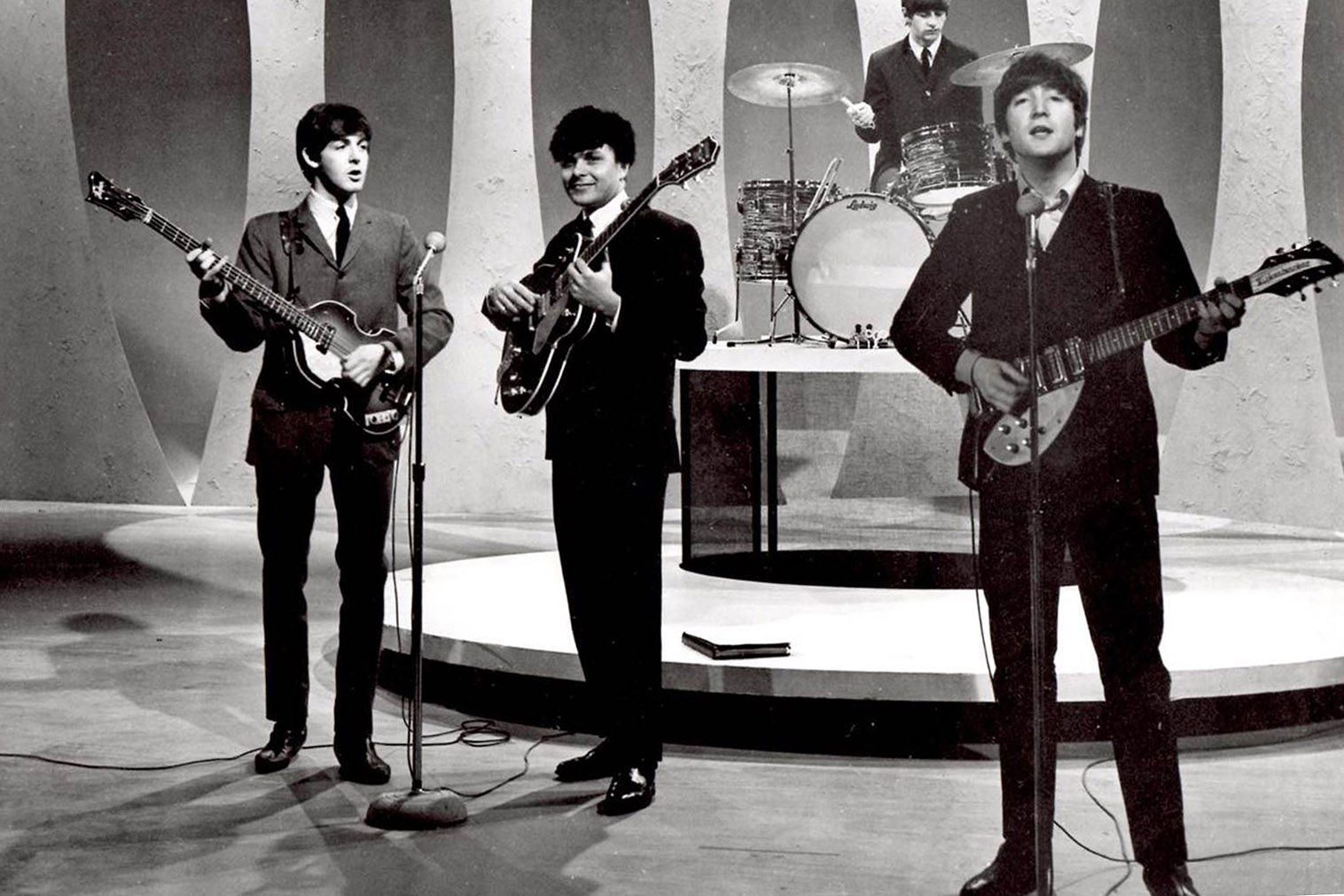Throwback Thursday: ‘The Ed Sullivan Show’

“The Ed Sullivan Show” acted as a mirror to the country for 23 years, turning up-and-coming artists and musicians into household names.
(SOFA Entertainment/CBS)
By Aalhad Patankar
Oct. 16, 2014 12:49 a.m.
It was the 1950s; a newer phenomenon called rock ‘n’ roll was sweeping the country, and television was starting to take its throne.
It was inevitable: Video did indeed kill the radio star, and one show drove the dagger.
Originally titled “Toast of the Town,” “The Ed Sullivan Show,” hosted by entertainment journalist Ed Sullivan, started off as a big-budget variety show, showcasing acts across the spectrum from music stars to opera singers and acrobats. And every Sunday for almost 23 years, it was what its original title promised: a lavish, Hollywood-at-its-height star-maker that turned up-and-comers into household names on the grandest stage on television.
It’s hard to imagine the influence “The Ed Sullivan Show” wielded in mid-century America. Today, the television variety show is dead, gone the way of disco balls and jukeboxes.
But for millions of Americans, Sunday night was their window into the art world, both fine and popular. For about an hour, they were right there among screaming teenagers in front of the newest, shaggy-haired British sensation one moment, and enjoying an intimate opera the next. The variety show was their primitive YouTube.
And at the heart of it all was the late Ed Sullivan, who passed away 40 years ago on Oct. 13. Standing stiff and hulking, Sullivan was hardly what you’d expect of a man who ruled television for a quarter century. He lacked the wit and grace of a typical host and was visibly uncomfortable in front of his guests. But there was an earnest enthusiasm around him: one that loved being the one to handpick and showcase talent to his country. Despite harsh criticism from all angles, each mispronounced name, each awkward misstep became his trademark as he won over the public’s affection.
It was hardly perfect: Sullivan was known for his short temper and editorial rigor, which he unleashed upon younger artists whom he felt didn’t fit in with the values he stood for. But today, the show still remains a heavily screened, but potent window into some of the iconic moments in entertainment history.
—–
The Beatles
Perhaps the most iconic performance happened on Feb. 9, 1964 – one of the 80 days that changed the world, according to TIME magazine.
Dressed in matching suits and mop-tops, a young British quartet known as The Beatles made their first national television appearance in front of 73 million people, still one of the largest viewing audiences in American television.
Opening with “All My Loving” and “Till There Was You,” The Beatles took the stage immediately after Sullivan’s intro to a frenzied crowd. The stage was perfect for the young Liverpool band: John Lennon took the lead, pleading the audience to hold his hand with smooth, restrained vocals, as Paul McCartney, Ringo Starr and George Harrison smiled and charmed their way through the performance. That night, The Beatles didn’t just put out their music, they put out an image: a group of heartthrobs that would grow and develop into more complex, experimental artists and shape the ’60s as we remember it.
The Beatles performed two more times on the show, as their hit single “I Want to Hold Your Hand” rose to top the charts, and the British Invasion was underway. Despite, or perhaps due to the wild frenzy they generated in the crowd, the Beatles won over Mr. Sullivan himself.
“Their conduct not only as fine professional singers, but as a group of fine youngsters will leave an imprint on everyone over here who’s met them, and that goes for all of us on our show,” Sullivan said on their final performance.
—-
The Doors
This time, the year was 1967, and a new Los Angeles band called The Doors was picking up steam with a brand of bluesy, psychedelic rock and the new hit single “Light My Fire.” Led by poet-vocalist and alumnus Jim Morrison, the band was already a few steps off the norm, heavily focusing on a darker side with moody lyrics and heavy instrumentation removed from traditional rock ‘n’ roll.
Sullivan and his network were particularly excited about this band; unbeknownst to the group, Sullivan had planned to have them on the show six more times, a monumental opportunity for a rising band. But the network put one stipulation: Instead of the original lyric “Girl we couldn’t get much higher,” Morrison had to replace the word “higher” for its association with drug use.
Against an intricate background of layered, colored doors, the band stepped onstage, somber and intensely focused on their music, detached from all else. Caressing the mic in his hands, Morrison crooned the song exactly as written, choosing to keep the original line, sealing the performance as their final appearance on the show.
Beyond just the shock value, the performance remains a classic sampling of The Doors. Keyboardist Ray Manzarek’s skills are on full display, as Morrison weaves together the heavy instrumentation with deeply resonant, haunting vocals.
Despite Sullivan’s fury, The Doors managed to broadcast an image: one, unlike The Beatles, of rebellion, crafted from breaking free of the confines and censorship television had placed upon them.
—-
And for about 23 years, Sullivan and his show ruled television and changed it forever. Whereas the ’50s and ’60s brought a wave of social change that stormed youth and popular culture, “The Ed Sullivan Show” allowed the rest of the country to catch up. Young punk rockers and sex symbols were finally given space, but they had to share it with traditional stars on their decline and vaudeville acts.
The show was in many ways America’s mirror: reflecting not only the conservative traditionalists or the new-era progressives, but rather the millions of Americans who lay somewhere in the middle, trying to figure it all out.
– Aalhad Patankar


